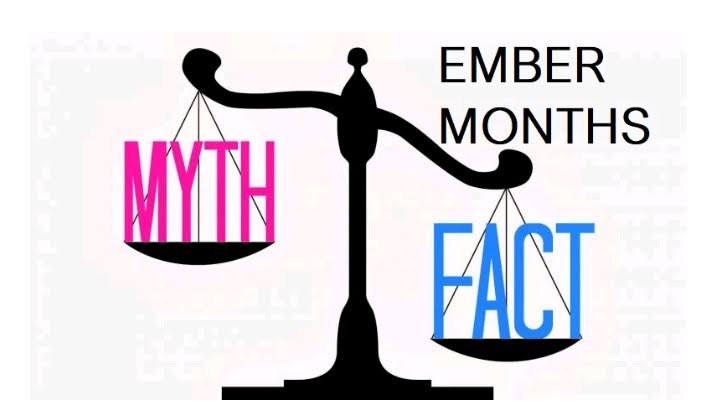Ember months: Myths and Facts
It’s that time of the year again when the average Nigerian becomes more vigilant, harbors fear of the unknown and is spiritually on edge. The last four months of the year commonly referred to as the “Ember months” – September, October, November and December, have been culturally tied to myths and superstitious beliefs in Nigeria and other West African countries. The Yorubas refer to these last four months as “Oṣù bà bà bà” meaning months of “-ber”

The phrase “ember month” originated from Catholicism. In Catholic tradition, these months are associated with the changing seasons and are considered particularly important for prayer, fasting and religious observances. The term “ember” comes from the Old English word “ymbrem,” meaning “circuit” or “cycle,” and it is related to the word “September,” The four Ember weeks are specific periods in each of the ember months (typically the third week) in which special prayers and practices are observed. Despite its origin, it is interesting to note that the phrase is most commonly used in Nigeria. In January 2020, “ember months” was added to the Oxford English Dictionary as one of the 29 new Nigerian English words.
In true Nigerian fashion, the -ember months have become a prominent part of our culture. Growing up, I was taught both in church and at home to intensify my prayers during this time of the year to forestall various calamities. However, I am yet to find a link between spiritual forces and the various tragedies the ember months are fraught with. I sometimes wondered if I was too blind and insensitive to the bad omen of this period or I was just overly logical. Well, I like you, shall discover and be properly enlightened soon enough as this article progresses.

Of the myths attached to the ember months, the following are most common; increased accidents and tragedies, spiritual attacks and witchcraft, increased crime rate and death toll, with spiritual attacks rank highest on this list. It’s not surprising that these beliefs have been entrenched in peoples’ consciousness as religious bodies regularly organize special prayer and fasting sessions to forestall the evils associated with the period. In reality however, the ember months are actually not spiritually jinxed contrary to popular opinion. Tragic events occur during the season just as in every other month of the year. Although they may occur a bit more than in other months, there are logical explanations for that.
During the last quarter of the year, there is an exponential increase in the activities of the public and private organizations. With the end of year looming close by, there is an increased pressure to meet previously set goals before the year runs out. As a result, directly and indirectly, end-of-the-year events have become a staple of this period. The frenzy associated with the festivities coupled with the fact that people are in a haste to make things happen during this period has contributed the tragic events that usually occur. Companies want to make more profits, drivers want to embark on more trips, swindlers want to cash out, farmers want more returns for their products, etc. The end goal is to be able to afford new clothes and Christmas chicken by the end of the year.

There is an increase in social activities, and alcoholic drinks are consumed recklessly in a bid to celebrate getting through the year, or simply just to let loose and perhaps comfort oneself. It is understandable that the roads become busier at this time and caution is more often than not thrown to the wind. This results in the surge in road traffic accidents, criminal activities, death toll, fire outbreaks among many other calamities that we commonly experience.
In my perception, the catastrophic events tied with the ember months are man-made rather than mythical. In the spirit of logicality and to avert ill occurrence during this season, one has to rely on facts and reason rather than superstition when making decisions or taking precautions.
Needless to say, the ember months come with some seasonal changes in many parts of the world which are scientifically proven. September marks the beginning of autumn in the northern hemisphere and in the southern hemisphere, it’s spring time. These last four months bring cooler temperatures and colorful foliage in many regions, making it a popular time for outdoor activities such as hiking and apple picking.

Rather than focus on the negatives, you should be excited and enthusiastic about this season and let it help you draw closer to your family, friends and loved ones. Also remember in the midst of all the frenzy, that responsible and modest living during this time of the year will help you avoid unnecessary tragedies.
